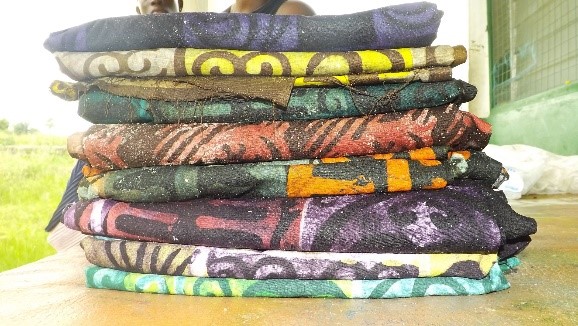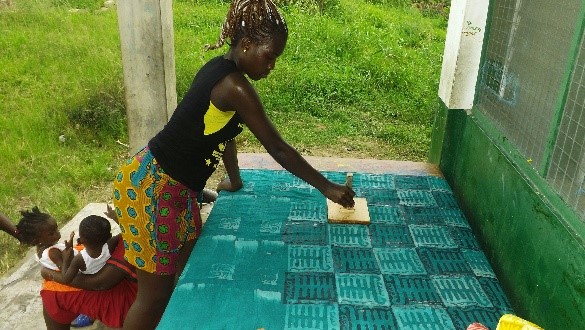The commencement of batik production in Assin in 2020, as part of the PAYDP Adolescent Girls Programme. The Project Inspire activity under the Adolescent girls programme funded by UNFPA and Canada, played a significant step towards empowering young girls in the community. Batik production, a traditional textile art form involving wax-resist dyeing, not only provided a means of skill development but also opened doors to economic opportunities and creative expression for the participants. Initially, the programme trained approximately 30-50 girls in the process of batik production. Through hands-on training sessions, the girls learned various techniques, including wax application, dyeing, and pattern creation, to produce vibrant and unique batik fabrics. This training not only equipped the girls with practical skills but also instilled confidence and a sense of achievement in their newfound abilities.
Following the training, the batik fabrics produced by the girls were showcased during the kayayei fair, providing a platform for the girls to display their craftsmanship and creativity to a wider audience. The positive reception of their batik products encouraged the expansion of the initiative in 2022 to include tye and dye t-shirt customization, as well as screen-printing techniques, further diversifying their product offerings and enhancing their entrepreneurial skills.
Moreover, the introduction of UNFPA dignity kit bags produced by the girls without supervision exemplified their growing expertise and autonomy in batik production. This milestone demonstrated the girls’ ability to apply their skills to create value-added products that not only served practical purposes but also promoted dignity and well-being within the community.
Importantly, the sustainability of the initiative was evident as the young girls continued batik production independently after the program and training concluded. Armed with the knowledge and skills acquired through the programme, the girls confidently produced batik fabrics without supervision, tapping into local markets and reaching customers in other parts of the region. This self-directed entrepreneurial activity not only provided a source of income for the girls but also contributed to the economic development of the community.


In conclusion, the batik production initiative under the PAYDP Adolescent Girls Program has empowered young girls in Assin to harness their creativity, develop valuable skills, and generate income through sustainable livelihood activities. By fostering entrepreneurship and self-reliance, the initiative has not only improved the socio-economic status of the participants but has also contributed to the cultural preservation and economic prosperity of the community as a whole.
